Today Current Affairs:1st July 2022 for UPSC IAS exams, State PSC exams, SSC CGL, State SSC, RRB, Railways, Banking Exam & IBPS, etc
Table of Contents
UN Ocean Conference: Blue Deal
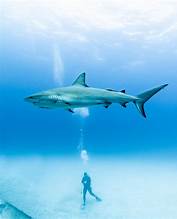
A “Blue Deal” is being promoted at the 2022 United Nations Ocean Conference to enable the sustainable use of ocean resources for economic growth.
- It includes global trade, investment, and innovation to create a sustainable and resilient ocean economy, according to the UN Conference on Trade and Development (UNCTAD).
- Benefits:
- Coastal and island developing nations can benefit from the sustainable development of the ocean economy, including fisheries and aquaculture, coastal tourism, maritime transport, offshore renewable energy, ecosystem services, and marine genetic resources.
- It can create jobs and generate revenue for these nations,
China-Horn Of Africa Peace, Governance And Development Conference:

First “China-Horn of Africa Peace, Governance and Development Conference.” was held.
- This is the first time China aims “to play a role in the area of security”.
- The conference held in Ethiopia witnessed the participation of foreign Ministries from the following countries of the Horn: Kenya, Djibouti, Ethiopia, Sudan, Somalia, South Sudan, and Uganda.
- The Horn of Africa is a peninsula in Northeast Africa.
- Located on the easternmost part of the African mainland, it is the fourth largest peninsula in the world.
- It lies along the southern boundary of the Red Sea and extends hundreds of kilometres into the Guardafui Channel, Gulf of Aden, and Indian Ocean.
- The Horn of Africa is equidistant from the equator and the Tropic of Cancer.
- The Horn contains such diverse areas as the highlands of the Ethiopian Plateau, the Ogaden desert, and the Eritrean and Somalian coasts.
- The Horn of Africa denotes the region containing the countries of Djibouti, Eritrea, Ethiopia, and Somalia.
- The area has experienced imperialism, neo-colonialism, Cold War, ethnic strife, intra-African conflict, poverty, disease, famine and much else.
Road Safety:
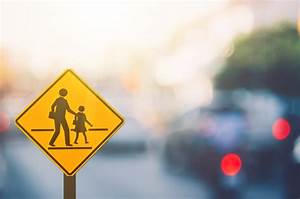
New global and country-level estimates suggest that routinely wearing helmets and seat belts, obeying speed limits, and avoiding driving drunk could save between 347,000 and 540,000 lives worldwide every year.
- The benefits of more motorcyclists wearing helmets would be the biggest in China, where 13,703 lives could be saved every year, followed by Brazil (5,802 lives), and India (5,683 lives), says the study published in The Lancet.
- Analysis of data from 74 studies in 185 countries estimates that targeting four key risk factors for road injuries and deaths (speeding, drink driving, and non-use of crash helmets and seat belts) could prevent between 25% and 40% of all fatal road injuries worldwide every year.
- The Lancet Series on road safety, published ahead of the first ever UN High-Level Meeting on Road Safety, calls for increased political and financial commitments, and for road safety to be included in mainstream development policies.
- It argues that this is essential to achieving the UN Sustainable Development Goals (SDGs), including the target to halve road traffic crash fatalities and injuries by 2030.
- Deaths on roads are a major problem in India. Each year road accidents kill about 150,000 people and injure another 450,000 in the country.
- The World Bank noted in a report this month that with only 1 per cent of the world’s vehicles, India accounts for almost 10 per cent of all crash related deaths.
47th Meeting Of The Goods And Services Tax (GST) Council:
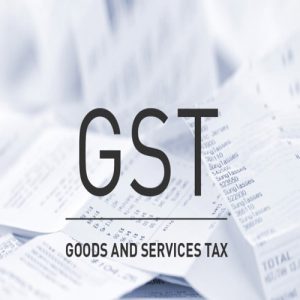
At the 47th meeting of the Goods and Services Tax (GST) Council, chaired by Union Finance Minister, officials approved hiking the rates for some goods and services while removing exemptions for several mass consumption items to simplify the rate structure.
- The Goods and Services Tax regime came into force after the Constitutional (122nd Amendment) Bill was passed by both Houses of Parliament in 2016.
- More than 15 Indian states then ratified it in their state Assemblies, after which the President gave his assent.
- The GST Council is a joint forum of the Centre and the states.
- It was set up by the President as per Article 279A (1) of the amended Constitution.
- The members of the Council include the Union Finance Minister (chairperson), the Union Minister of State (Finance) from the Centre.
- Each state can nominate a minister in-charge of finance or taxation or any other minister as a member.
- The Council, according to Article 279, is meant to “make recommendations to the Union and the states on important issues related to GST, like the goods and services that may be subjected or exempted from GST, model GST Laws”.
- It also decides on various rate slabs of GST.
- For instance, an interim report by a panel of ministers has suggested imposing 28 % GST on casinos, online gaming and horse racing.
Pay Roll Automation For Disbursement Of Monthly Allowances (PADMA):
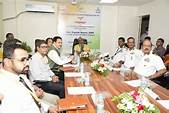
The Ministry of Defense inaugurated PayRoll Automation for Disbursement of Monthly Allowances (PADMA), an automated Pay & Allowances module for the Indian Coast Guard.
- PADMA is an automated platform leveraging latest technology which will provide seamless and timely disbursal of Pay & Allowances to around 15,000 Indian Coast Guard personnel.
- This module has been developed under the aegis of the Defense Accounts Department and will be operated by Pay Accounts Office Coast Guard, Noida.
- The launch marked the beginning of the Centralized Pay System (CPS), the foundation of which is being laid down by the Defense Accounts Department Headquarters to provide one stop pay accounting solutions for all organizations under the Ministry.
- Launch of PADMA will strengthen the Digital India Vision. Also, it is an ‘Atmanirbhar Bharat’ initiative as the entire module has been designed and developed by Indian entrepreneurs assisted by domain experts.
Indian Coast Guard:
- It is a maritime law enforcement and search and rescue agency of India with jurisdiction over its territorial waters including its contiguous zone and exclusive economic zone.
- Contiguous zone: It is a band of water extending farther from the outer edge of the territorial sea to up to 24 nautical miles from the baseline.
- Special Economic Zone (SEZ): It is an area in a country that is subject to different economic regulations than other regions within the same country.
- It comes under the under the Ministry of Defense.
- The concept of forming ICG came into being after the 1971 war.
- The blueprint for a multidimensional Coast Guard was conceived by the visionary Rustamji Committee.
Rim Of The Pacific (RIMPAC) Exercise 2022:
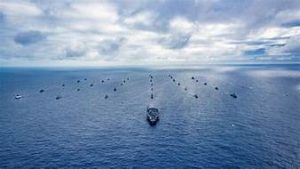
The RIMPAC-22 exercise will be held in and close to the Hawaiian Islands and Southern California from 29th June to 4th August,
27 countries are participating in the current edition of the multi-dimensional exercise.
- RIMPAC-22 is one of the largest biennial multilateral Naval Exercises, which is led by US.
- The RIMPAC started in 1971 as an annual exercise by the US, Australia, and Canada.
- But from 1974, maritime exercise became a biennial event.
- It is aimed at enhancing interoperability and building trust among Navies of friendly foreign countries.
- Theme for 2022: The theme of RIMPAC 2022 is ‘capable, adaptive, partners.
- India first participated in RIMPAC in 2014 when the indigenously built Shivalik class stealth frigate INS Sahyadri took part in the exercise.
- INS Sahyadri again represented the country in the 2018 edition of the event.
- In between, in 2016, INS Satpura joined the maritime exercise.
- Before 2014, the Indian Navy’s presence in the wargames was only as an observer for the 2006, 2010 and 2012 editions.
- In the current edition, Indian Navy’s INS Satpura and one P8I maritime patrol aircraft are participating in the exercise.
ABHYAS: High-Speed Expendable Aerial Target

India successfully tested the indigenously-designed Abhyas – a High-speed Expendable Aerial Target (HEAT) – in Odisha.
- The trial was carried out by the Defence Research and Development Organisation (DRDO) from the Integrated Test Range (ITR) in Odisha’s Chandipur.
- ABHYAS Designed and developed by Aeronautical Development Establishment (ADE), of DRDO.
- ADE is a key Aeronautical Systems Design Laboratory under DRDO.
- It is involved in the design and development of the state-of-the-art Unmanned Aerial Vehicles (UAV) and Aeronautical Systems and technologies to meet the requirements of the Indian Armed forces.
- It is powered by a gas turbine engine to sustain a long endurance flight at subsonic speed.
- It is equipped with a MEMS (Micro-Electro-Mechanical Systems)-based Inertial Navigation System (INS) for navigation along with the Flight Control Computer (FCC) for guidance and control.
- The vehicle is programmed for fully autonomous flight and their check-out is done using a laptop-based Ground Control Station (GCS).
- Abhyas system is equipped with Radar Cross-Section (RCS) and infrared signatures which can be used to simulate a variety of aircraft for the practice of anti-aircraft warfare and also for the testing designed to target aerial targets.
- It will be used as a target for the evaluation of various missile systems.
- It offers a realistic threat scenario for practice of weapon systems.
UN Report On Internet Shutdown:
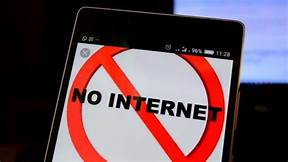
A report published by the Office of the United Nations High Commissioner for Human Rights (OHCHR) named Internet shutdowns: Trends, causes, legal implications and impacts on a range of human rights, stated that shutting down the internet affects people’s safety & well-being, hampers information flow and harms the economy.
- Internet shutdowns are measures taken by a government or by any entity on behalf of a government, to intentionally disrupt access to and the use of information and communications systems online.
- Shutdowns often include complete blocks of Internet connectivity or accessibility of the affected services.
- However, governments increasingly resort to throttling bandwidth or limiting mobile service to 2G, which, while nominally maintaining access, renders it extremely difficult to make meaningful use of the Internet.
- Governments across the world have resorted to shutting down the internet citing a range of reasons.
- Further makes it difficult to share and watch videos, live broadcasts, and other journalistic work, often ordered during civil society movements, security measures as well as electoral proceedings, and severely restricts human rights monitoring and reporting.
Global Scenario:
- The first major internet shutdown that captured global attention took place in Egypt in 2011 and was accompanied by hundreds of arrests and killings.
- The #KeepItOn coalition, which monitors internet shutdown episodes across the world, documented 931 shutdowns in 74 countries from 2016-2021.
- As many as 12 countries implemented more than 10 shutdowns during that period. Globally, all regions have experienced multiple shutdowns, but the majority reported occurred in Asia and Africa.
- As many as 132 of the shutdowns recorded by civil society groups were officially justified by the need to control the spread of hate speech, disinformation, or other forms of content deemed illegal or harmful.
Indian Scenario:
- India blocked or disrupted internet connections 106 times and at least 85 of India’s internet shutdown episodes were in Jammu & Kashmir.
- Almost half of all shutdowns recorded by civil society groups from 2016-2021 were carried out in the context of protests and political crises, with 225 shutdowns recorded during public demonstrations relating to a vast range of social, political or economic grievances.
Primary Agricultural Credit Societies:

Cabinet approves digitisation of 63,000 Primary Agricultural Credit Societies.
- PACS: It is a village-level institution that works directly with rural residents.
- It encourages agriculturists to save, accepts deposits from them, makes loans to deserving borrowers, and collects repayments.
- PACS are the lowest unit in a three-tier structure: The other two tiers — State Cooperative Banks (StCB) and District Central Cooperative Banks (DCCB) — have already been automated by the NABARD and brought on the Common Banking Software (CBS).
Benefits:
- Computerisation will bring transparency and link all credit societies to a common accounting system
- Each PACS will get around ₹4 lakh to upgrade its capacity and even old accounting records will be digitised and linked to cloud-based software.
- Service delivery: Direct Benefit Transfer (DBT), Interest Subvention Scheme (ISS), Crop Insurance Scheme (PMFBY), and inputs like fertilizers and seeds
- A government statement said that PACS account for 41% (3.01 crore farmers) of the Kisan Credit Card (KCC) loans given by all entities in the country
GEMCOVAC-19:
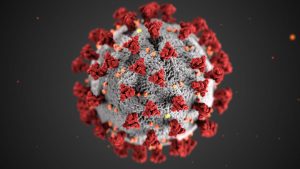
India’s first home-grown mRNA Covid-19 vaccine GEMCOVAC-19 developed at Pune’s Gennova Biopharmaceuticals has got a ‘restricted emergency use’ nod for the 18-and-above age group.
- Most vaccines contain a weakened or dead bacteria or virus. However, scientists have developed a new type of vaccine that uses a molecule called messenger RNA (mRNA) rather than part of an actual bacteria or virus.
- Messenger RNA is a type of RNA that is necessary for protein production.
- In cells, mRNA uses the information in genes to create a blueprint for making proteins.
- Once cells finish making a protein, they quickly break down the mRNA. mRNA from vaccines does not enter the nucleus and does not alter DNA.
- mRNA vaccines work by introducing a piece of mRNA that corresponds to a viral protein, usually a small piece of a protein found on the virus’s outer membrane. (Individuals who get an mRNA vaccine are not exposed to the virus, nor can they become infected by the vaccine.)
- Using this mRNA blueprint, cells produce the viral protein.
- As part of a normal immune response, the immune system recognizes that the protein is foreign and produces specialized proteins called antibodies.
CAPSTONE Mission:

NASA launched CAPSTONE, a microwave oven-sized CubeSat weighing just 55 pounds (25 kg). CAPSTONE, short for Cislunar Autonomous Positioning System Technology Operations and Navigation Experiment, is designed to test a unique, elliptical lunar orbit.
- The satellite, launched on Rocket Lab’s Electron rocket from the Rocket Lab Launch Complex 1, is heading toward an orbit intended in the future for Gateway, a Moon-orbiting outpost that is part of NASA’s Artemis program.
- As a pathfinder for Gateway, CAPSTONE aims to help reduce risk for future spacecraft by validating innovative navigation technologies, and by verifying the dynamics of the halo-shaped orbit.
- The orbit is known as a near-rectilinear halo orbit (NRHO).
- It is significantly elongated, and is located at a precise balance point in the gravities of Earth and the Moon.
- This offers stability for long-term missions like Gateway, NASA said on its website.




